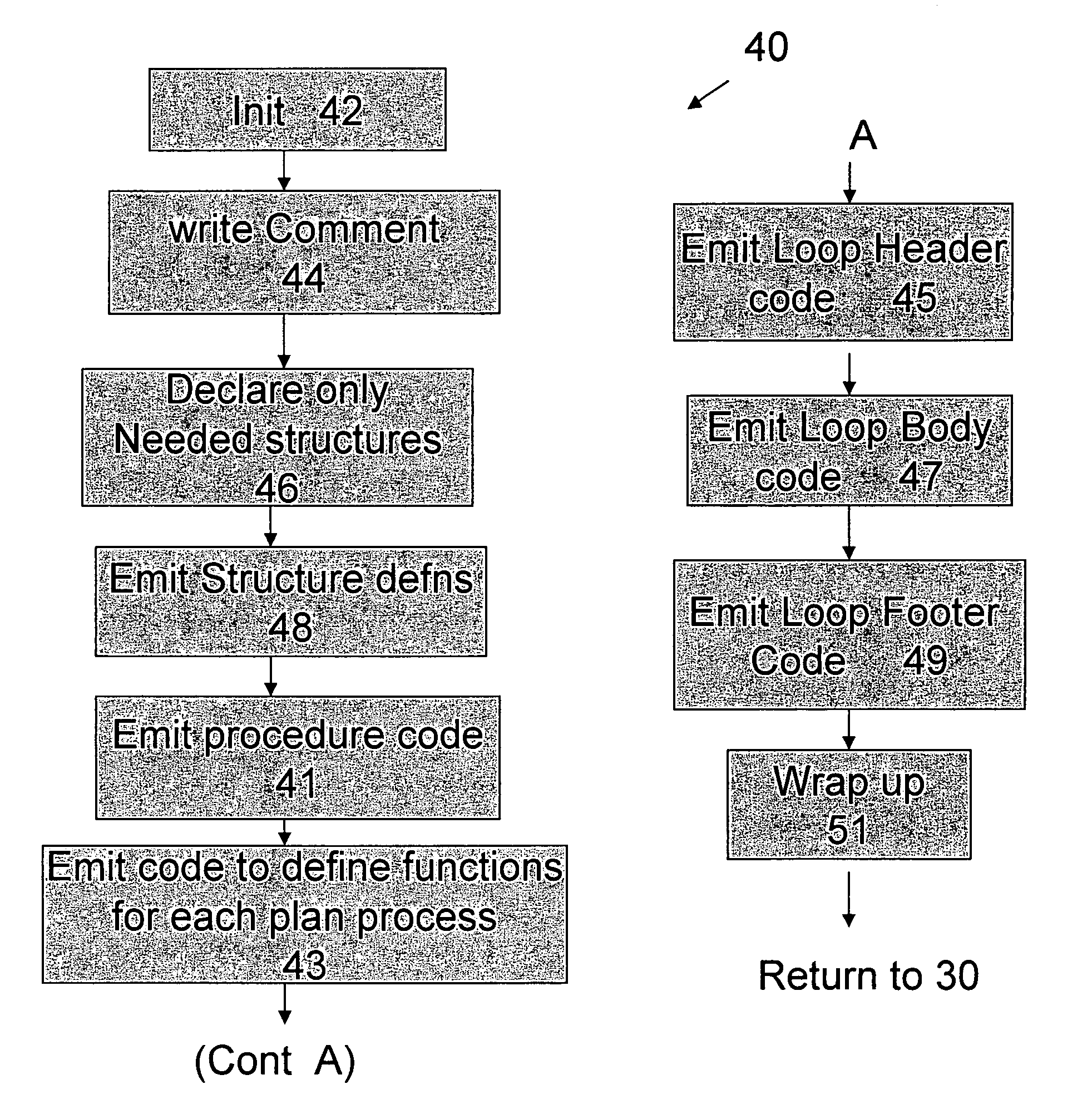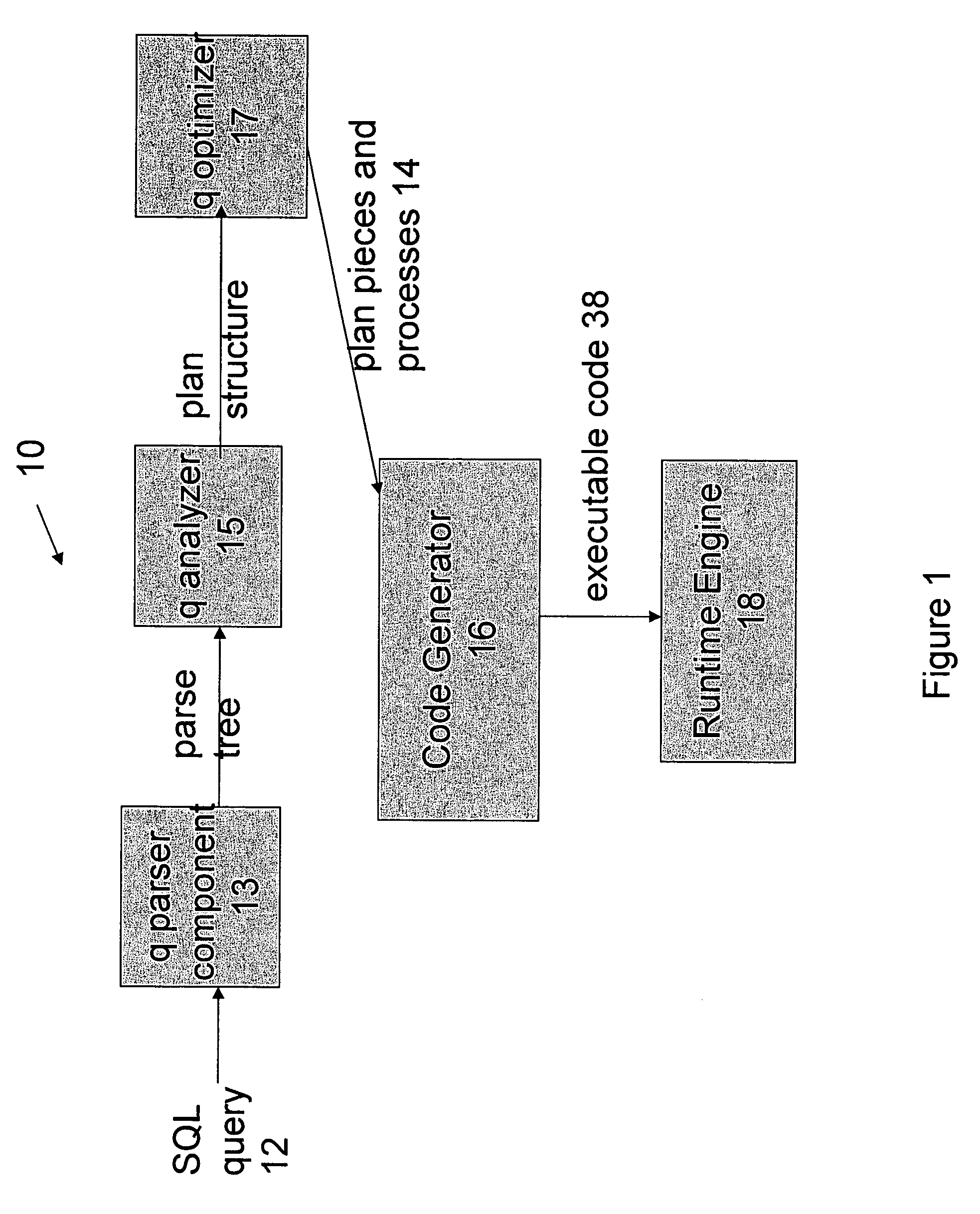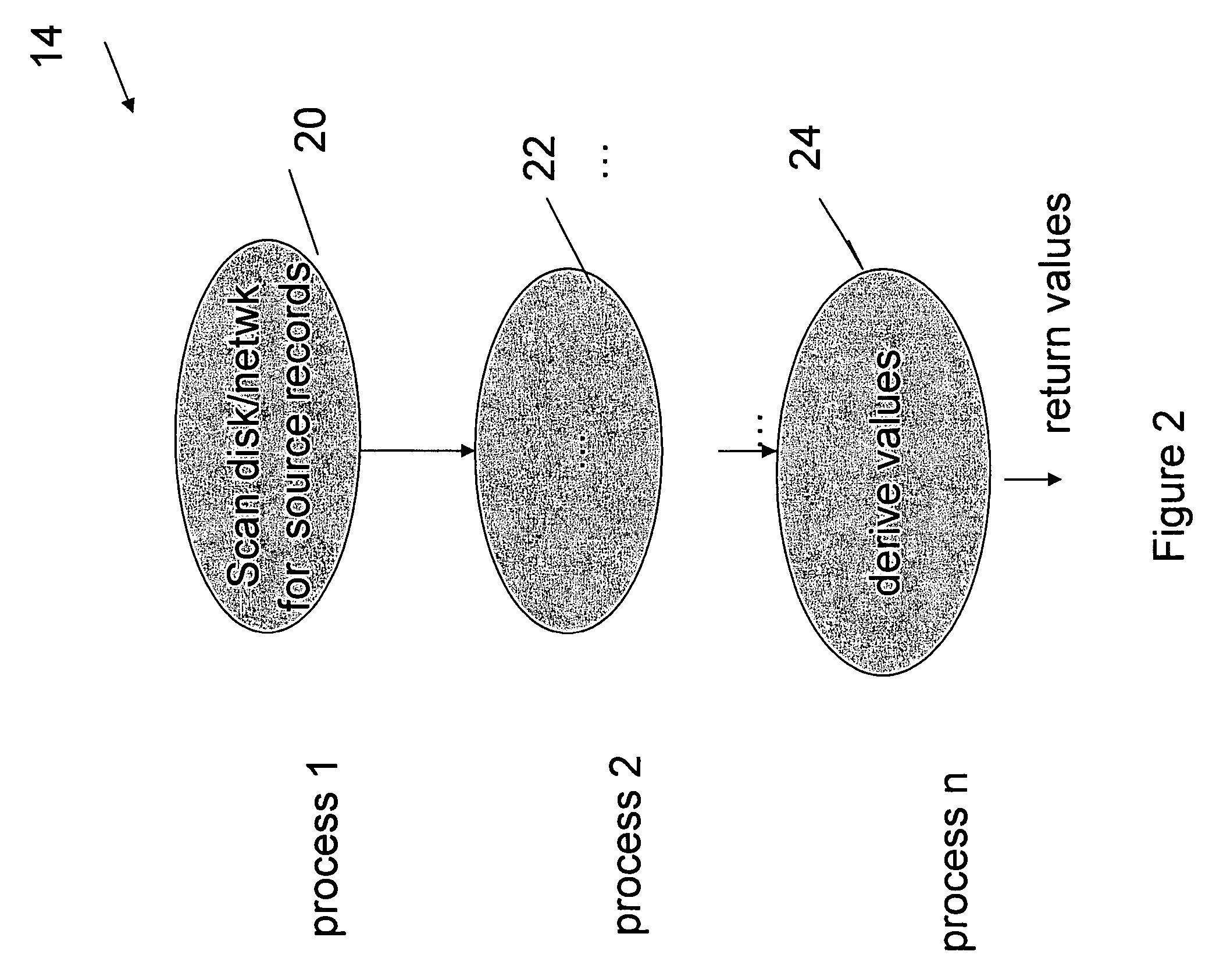Optimized SQL code generation
a technology of optimizing and generating sql code, applied in the creation/generation of source code, data processing applications, instruments, etc., to achieve the effect of avoiding the overhead of materialization memory allocation and copying, and improving performan
- Summary
- Abstract
- Description
- Claims
- Application Information
AI Technical Summary
Benefits of technology
Problems solved by technology
Method used
Image
Examples
example
[0135]The following SQL Statements create and populate a table:[0136]create table ps (n numeric(20,2) not null, m numeric(20,4) not null);[0137]insert into ps values (25.10, 130.3000);
And this statement retrieves a computed value from the table:
select (n+m)+2*(n+m) from ps;
The two columns, n and m, have declared precisions of 20 decimal digits and are stored by the invention as 128-bit values. So, a C++ code fragment showing the record layout would be:
[0138]
/ / Input data record structure.struct TScan 0 {CNumeric128 f1; / / column nCNumeric 128 f2; / / column m};
But, by virtue of the invention's tracking of actual column values, one knows that the data in column n requires only 4 decimal digits, and column m only 7 decimal digits. So, this is a good example to show the advantage of the invention. First, let's look at some C++ code fragments in the absence of this feature of the invention:
[0139]
/ / Select result row, with wide 128-bit result column f0.struct TReturn 3 {CNumeric128 f0; / / ...
PUM
 Login to View More
Login to View More Abstract
Description
Claims
Application Information
 Login to View More
Login to View More - R&D
- Intellectual Property
- Life Sciences
- Materials
- Tech Scout
- Unparalleled Data Quality
- Higher Quality Content
- 60% Fewer Hallucinations
Browse by: Latest US Patents, China's latest patents, Technical Efficacy Thesaurus, Application Domain, Technology Topic, Popular Technical Reports.
© 2025 PatSnap. All rights reserved.Legal|Privacy policy|Modern Slavery Act Transparency Statement|Sitemap|About US| Contact US: help@patsnap.com



